The weather is lovely and I’m now really back to work on the HomeBox. As per always, before anything may be done, something else must first be done (applies recursively). One thing that had to be done before a lot of other things could be done is I wanted to have a good, solid workbench on which to build all the interior things.
General construction doesn’t take much more than a couple of sawhorses to hold your lumber while you cut it, but finer interior work requires quite a bit more precision and agility when it comes to holding the wood while working it into whatever form it needs to be. I had failed to fully appreciate this until relatively recently, when I was taking classes at the Connecticut Valley School of Woodworking. Among the many useful things I learned in school, the value of a massive, immobile workbench became quite apparent. So I made one. This one. As shown: 240 pounds of hardwood and hardware.
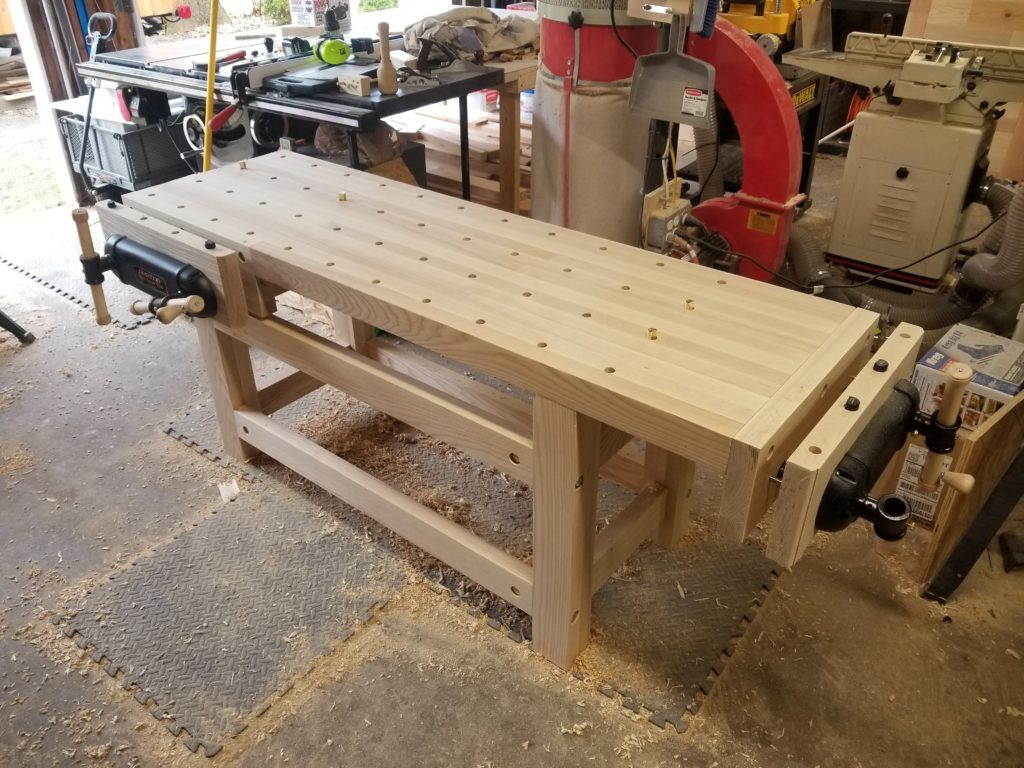
It’s glorious. I’ve been using it for little projects and it has already made its considerable value known. Where has this been all my life? Well, for the most part, it was a tree 🙂
What’s going on in the interior, then? A bunch of things kind of all at once. Remember that ceiling mural for the bathroom? With all the royalty? Today I began the process of actually mounting it to the ceiling.
I also did some cleanup work around the light ports and the level sensing ports for the graywater holding tank.
Mostly, though, I thought about batteries. Remember these?
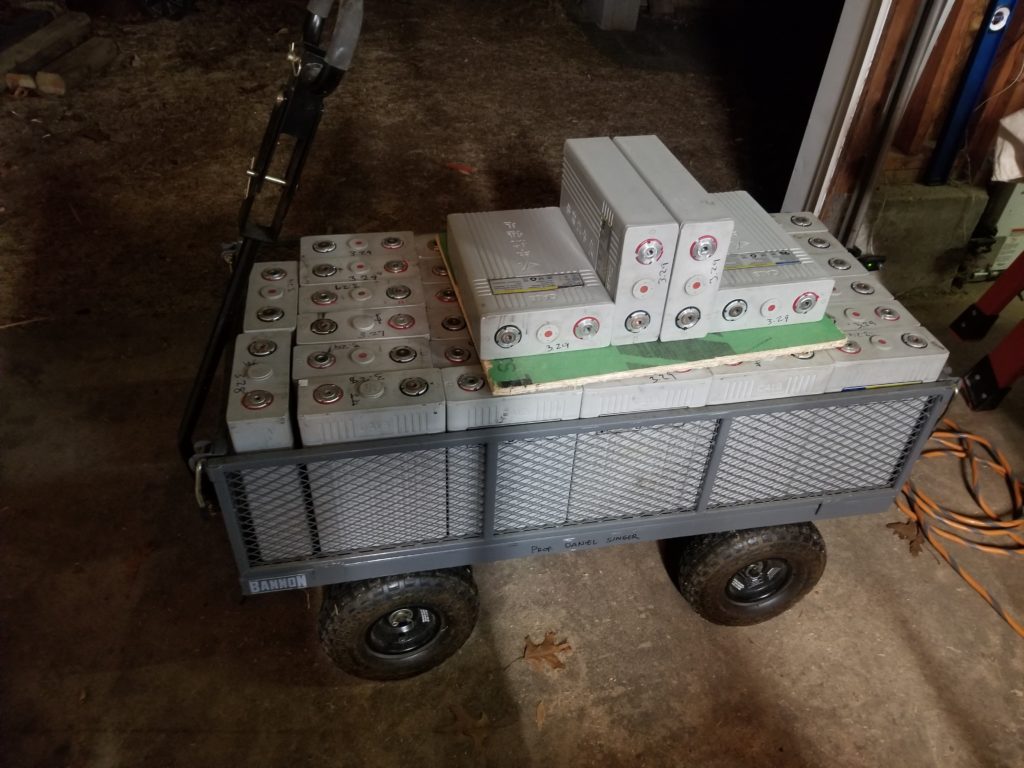
32 of those blocks needs somewhere to go. They’re 7″ wide, 3″ thick, and 11″ long. Finding a place for 32 of them that isn’t too far from the power control center — and figuring out where the power center will go — was a big part of today’s braining. It’s 3ft wide, nearly 2ft high, 10″ deep, and weighs in at 120 pounds. I have to put it somewhere I can reach and can see, but really don’t want it in the main living area, either.
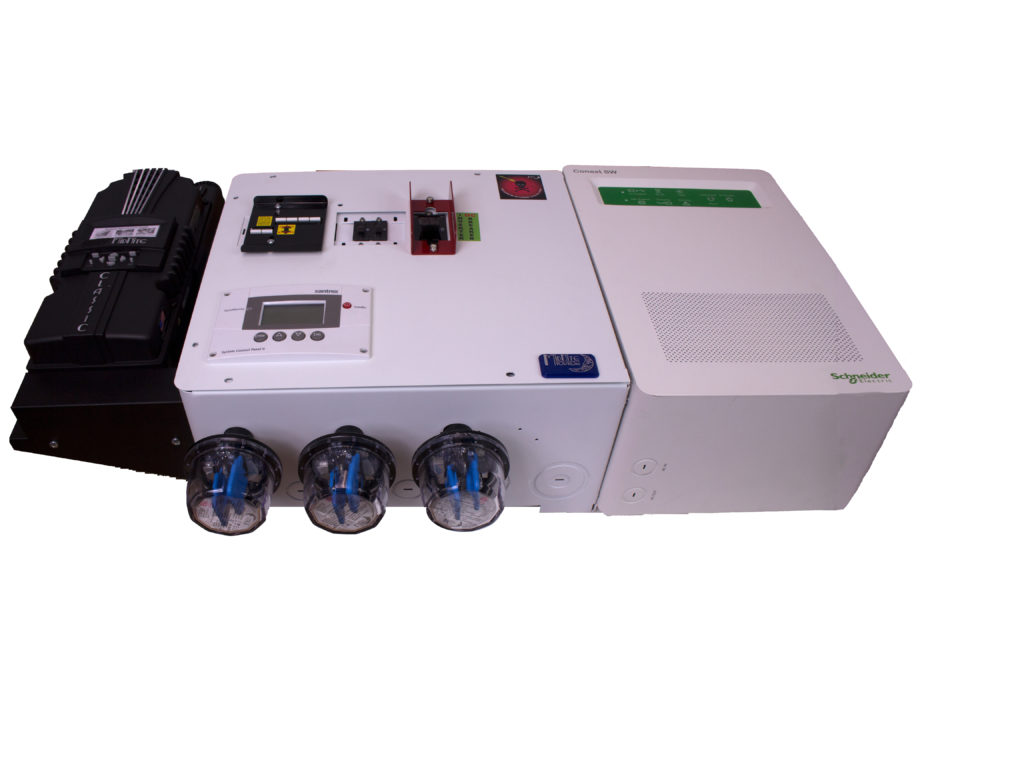
The storage/utility loft is the obvious place for it, but it has to be close to the batteries and they take up a lot of volume, as well as themselves being pretty heavy (400#). I did build the SUL good and sturdy, but there are limits. 50 gallons of fresh water. 50 gallons of gray water. That’s 820 pounds of water. Keep going with the batteries and the power center and you see why I’m starting to think carefully about this!
Actually, the power center and the batteries will be mounted on the wall, not the floor, so the floor doesn’t need to bear that 500# in addition to the water and whatever other equipment and stowed gear is up there. But I do have to think about these things. That’s also why I chose douglas fir instead of pine for the floor joists. It’s a bit stronger.
The other things I need to think about are how to protect those 32 batteries (technically, the boxes are cells, 16 of which make a battery, and there are 2 such batteries in this system — but most non-engineers think of anything that stores electricity as a “battery”, so we’ll let it slide). The answer is one each of these per battery.
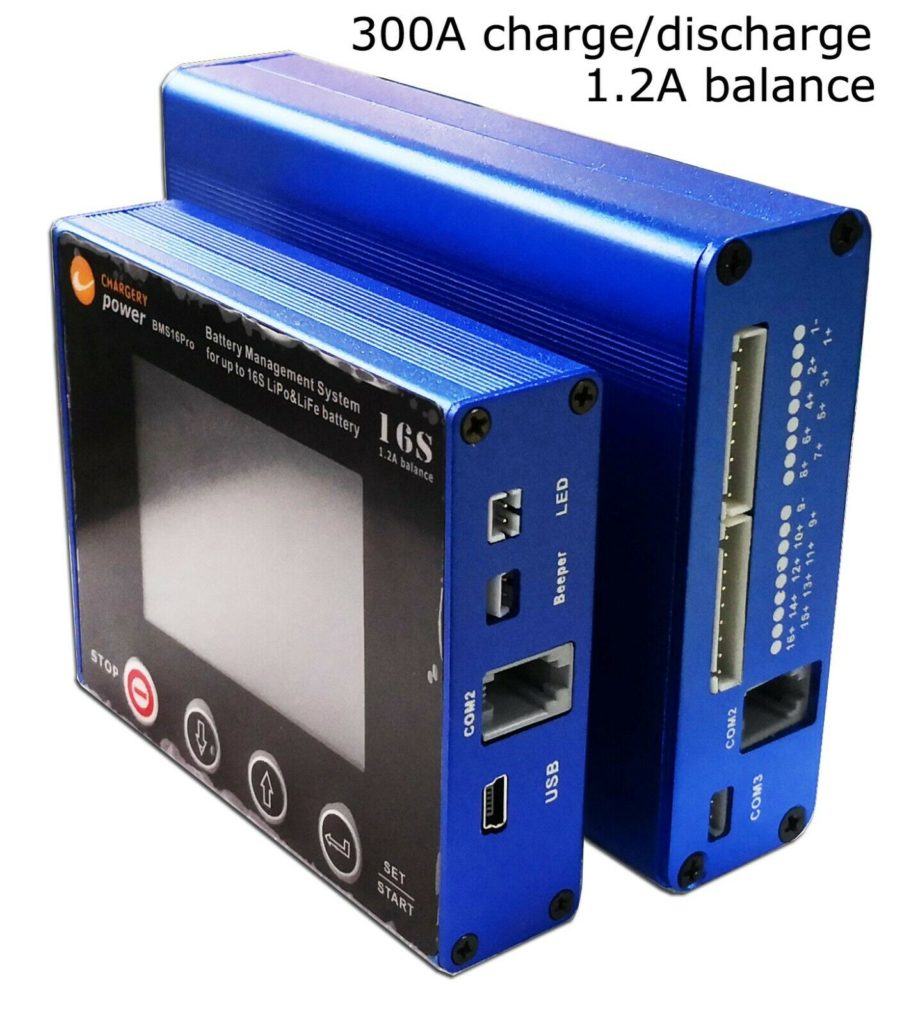
This is a Battery Management System. It monitors each cell as well as charge/discharge current and signals interrupters to interrupt things if any of a number of unwanted watched-for things happens, among other activities in support of maximizing the service life of the cells.
Great, all set! Done!
No. Not done. The BMS is a great start but I also need to consider how those interrupters are going to coexist in the rest of my system. And I need to think about what happens if one of my batteries is cut out and the other is still going — how to keep them from fighting each other if the cut-out one comes back (at a different state of charge).
And then there’s boostrap questions. Fault recovery protocols. The ever-important game of what-if to ensure all the things are covered. I’ve come to really appreciate what those much more expensive all-in-one battery-and-BMS-and-everything-else modules had to offer.
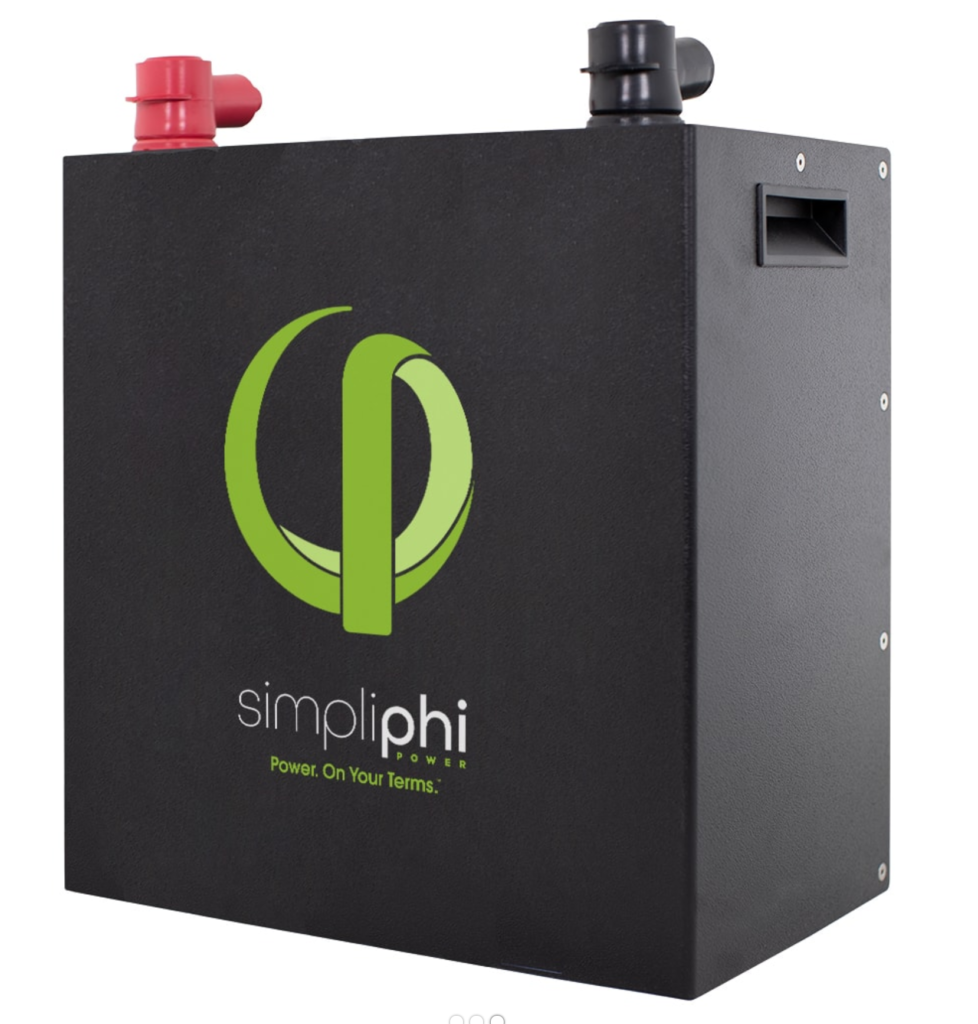
Their brand, “simpliphi” really says it all. I am still glad I saved many thousands of dollars doing it myself, but I have new respect for how much is going on under the hood of one of these things. Good thing I’m already an engineer. And one who has engineer friends.
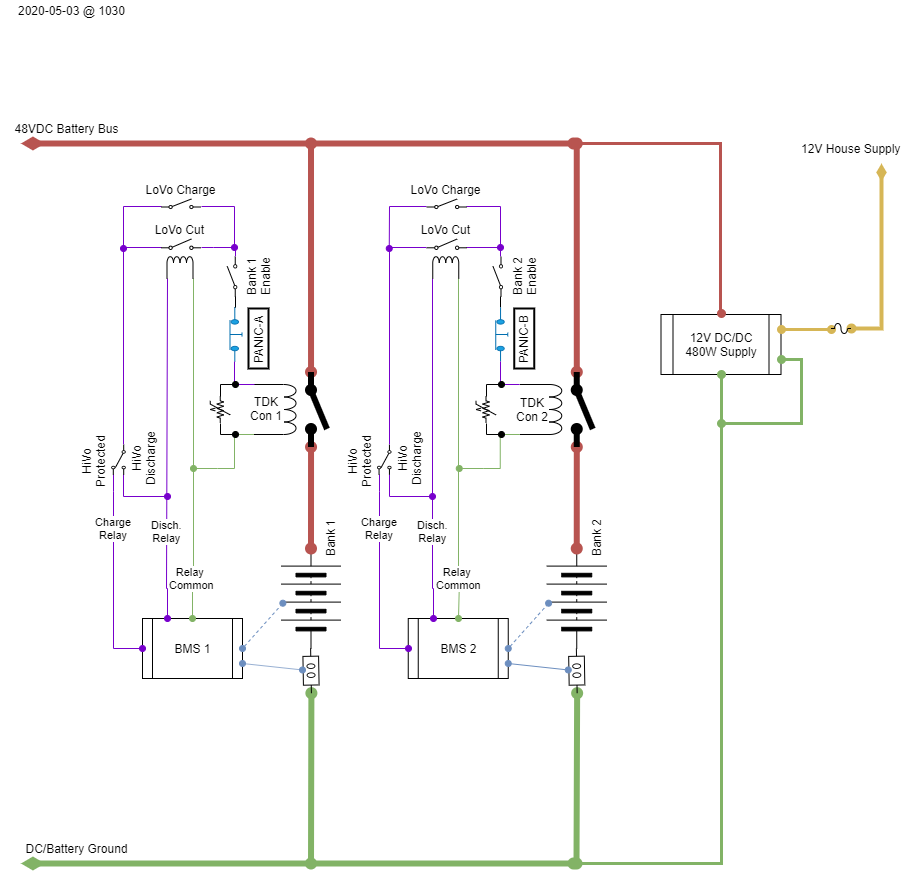
This drawing isn’t here for you to scrutinize. It’s just my current draft anyway, and is thus likely to be revised. While it may not seem particularly complicated (or maybe it does!) it represents rather a lot of thinking that had to be done to understand the relationship between the BMS, the various cut-out devices, and whatever is necessary to support override and recovery protocols I’m likely to need. That’s kind of what would be inside that simpliphi box, if I had that box.
And then there’s this, which I was working on today, too. At one point, this little computer had a role to play in the power system, which is why it came along for the ride today, but in its current (ha!) form, it is an independent thing.
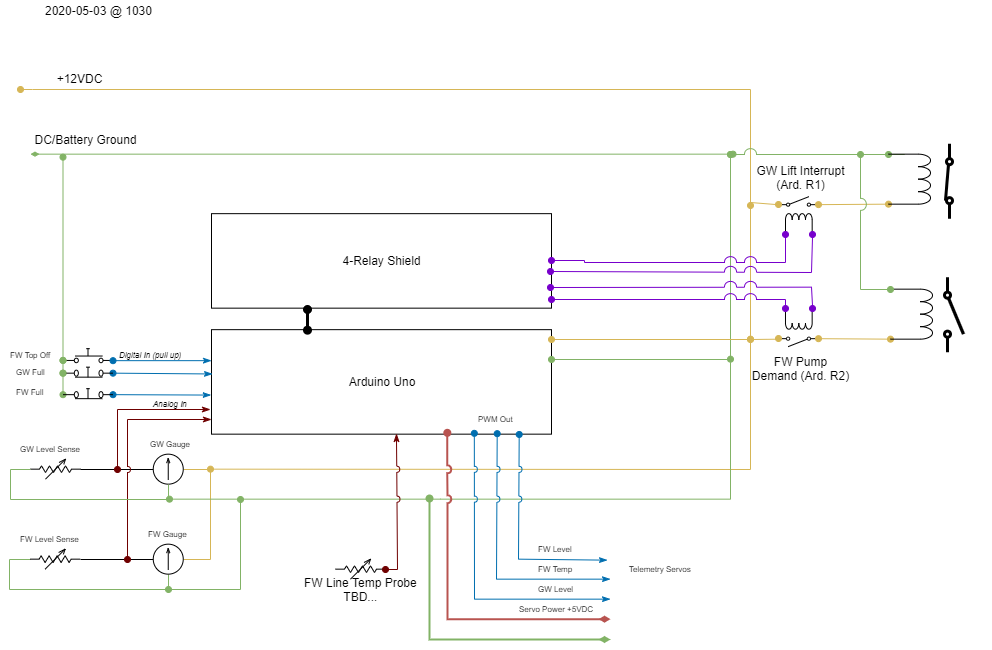
So what is it? It’s the BoxBrain. A tiny computer with a few tasks to perform, some of them critical, others merely informational.
First, it occurred to me some time ago that I might want to know the state of the holding tanks without having to go to the one place the tank gauge lives. For example, the fresh water holding tank level is relevant to someone at the kitchen sink as well as someone in the bathroom. The level sensor can only drive a single gauge. I want it to drive two. The BoxBrain takes care of that, reading the level off the sensor and driving a separate gauge, wherever I want it.
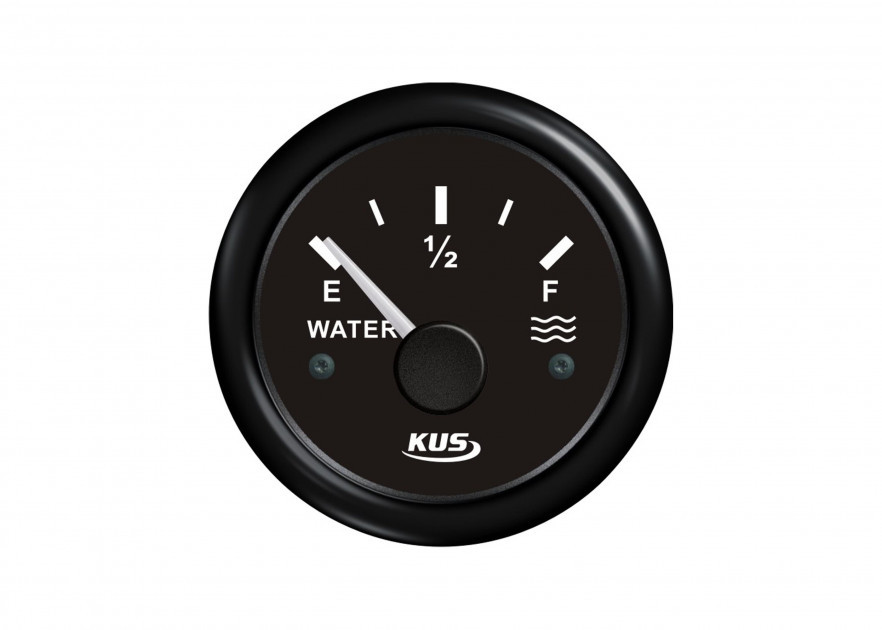
The primary gauge, which also manages the electrical interface to the sensor, looks like this. Very spiffy.
The secondary gauge will actually be some kind of 3D printed arm attached to a micro servo positioner. I have the servos but have not yet designed the whole readout thingy. I could go all steam-punky with it… or industrial age… who knows. Plenty of options 🙂 I could even get really creative if I felt the urge. Anyway, the computer can read the level from the sensor (as hosted by the primary gauge head) and convert that into a signal to command the servo to move the aux pointer accordingly. Presto: an auxiliary gauge wherever I want it. One for fresh water level, one for gray water level. Maybe one for fresh water standpipe temperature, too. What? More on that next.
Another thing the BoxBrain does is keep the freshwater intake line from freezing. You might think at first that the best way to do that is to just heat it. Just heat it. But you would be forgetting some critical laws of physics if you did. Heating things takes a lot of energy. Energy has to come from somewhere. All the electrical energy in the HomeBox comes from the sun. To keep a pipe warm with an electric heater would use surprisingly much of my daily energy budget, leaving me far less to spend on things like lighting and water pumping and laptop charging. I had a clever idea to solve this.
Whereas, the water in the well is somewhat above freezing (in the realm of 50F around here), and whereas most of the run from the well to the house is deep enough buried such that it does not freeze, and whereas only a short run of standpipe from the buried section to where it enters the “heat envelope” of the house is subject to freezing, therefore all I really need to do is advance some of that nice 50F water into the standpipe from time to time as the water there approaches freezing. Since I already need to pump water into the house to have water in the house, the energy spent pumping it in is not wasted at all — I needed to do that pumping anyway. The trick is to pump just enough to keep the standpipe from freezing. I do that by having the computer monitor the temperature and control the well pump. It’s a slow way to fill the freshwater tank, for sure. If the tank was empty and it was daytime, a more complete fill action is warranted. The daily use will draw down the reserve and cause more pumping (and freeze mitigation thusly). At night, though, strategically letting the tank run down and not filling it all the way back up makes it possible to run the pump in shorter intervals, slowly filling the tank for the next day’s use and keeping the water in the standpipe above freezing. Ta da!
But what if the thermostatic pumpifying de-freezerator needs to pump more water than the freshwater holding tank can hold? Easy. Yonder tank needs an overflow relief anyway.
What else does BoxBrain do? It also monitors the graywater holding tank for being full. If the tank gets full, it cuts power to the graywater lift pump, preventing that thank from over-filling. Why not just let it drain out? To prevent the graywater outlet pipe from accumulating ice as small amounts of graywater exit at random intervals, the graywater is held in a tank onboard and released all at once from time to time. The 50-gallon dump is pretty powerful, flushing out any minor ice build-up left by the end of the previous dump. The dump water is approximately house temperature, warm enough not to freeze on its way out and it will probably melt any ice that somehow did form. This is why the graywater is held and then dumped as a batch rather than simply allowed to flow out gently as it is produced. And because it must be accumulated, the holding tank must be monitored and kept from overflowing. Hence the intervention from BoxBrain.
These are but a few of the things I’m working on at present. As usual, lots going on…